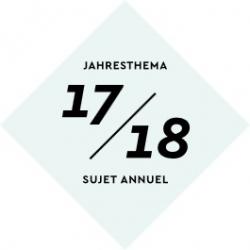Annual Theme 17/18
The Art of the Ancien Régime: Centers, Actors, Objects
The Art of the Ancien Régime: Centers, Actors, Objects
The art of the Ancien Régime is distinguished by its variety. Several European centers competed with one another. Even in France, Paris only gradually emerged as the most prominent site, while other centers maintained some importance. Lively exchange existed between courts and cities; artworks travelled as much as artists, whose works were not only to be found in their places of work and residence. A network of relationships extended across the country and beyond its borders. For a long time, art in France had received important impulses from its neighboring countries; foreign artists, particularly those from Italy and the (southern) Netherlands were so influential that it would be more fitting to discuss art in France rather than French art. Beginning in the last third of the seventeenth century, French art spread to other countries, particularly throughout the German-speaking world and to Russian as well as to other continents.
The annual theme will look at art in France from the sixteenth century to the French Revolution, the diversity of which has been insufficiently outlined due to an emphasis on regional characteristics. Along with the geographic location of works of art and their incorporating into both a local and a transregional context, the objective is also to take their social and political dimension into account. The relationship between urban and courtly art must be explored not only in the context of Paris. Confessional aspects played an important role in the religious conflicts, which peaked in the religious wars, and the Counterreformation, even in the enlightened eighteenth century. The era also poses numerous other methodological challenges: The mobility of artists, artworks, and artistic and art theoretical concepts prevents the use of statistical models as a starting point; for this reason, the differentiation between center and periphery must be examined. The relationships between the various artistic genres and media must also be reflected as well as the relationship between high and low, between so-called high art—a term which, beginning in the mid-seventeenth century, was claimed in particular by the Parisian art academy—and popular image production.
In connection with the annual theme, the German Center for Art History Paris is offering several research scholarships beginning on September 1, 2017 (duration: 12 months). Graduates with a degree in art history or a related discipline (MA and/or PhD), who research this subject are invited to apply by submitting the usual documents (résumé; academic transcripts; list of publications, if applicable; letters of recommendation from supervising faculty) along with an abstract of the project (max. 3 pages, including a project schedule and bibliography) by March 12, 2017. The annual theme is overseen by Thomas Kirchner (German Center for Art History Paris) and Sophie Raux (Université Lumière Lyon 2).
Additionally, the German Forum for Art History Paris welcomes application that lie beyond the scope of the annual theme but that correspond with the institute’s other research emphases. The conference languages are German, French, and English. Knowledge of German and French are required.
Please send applications electronically as a document (no larger than 10 MB) to stipendien@dfk-paris.org. For further information, visit: http://www.dfk-paris.org.
For more information please refer to the German or French description.





